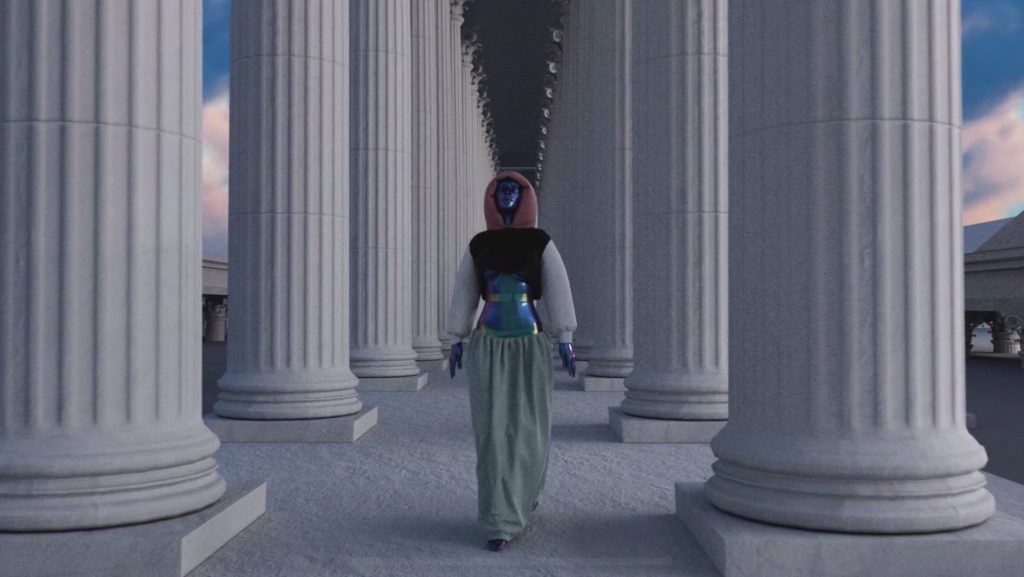The Future of Non-Fungible Tokens in the Framework of Digitalization in Cultural Heritage, Heritage Law and Property Rights

by
by Çiçek Doğruel
Published November 12, 20223D scanning and printing has been among the most important technological developments in the protection of cultural heritage during the first quarter of the 21st century. On the other hand the debate of who should own the copyright of the scans is uncertain today. The ideological layers of the practices invite us to question the concept of digital colonialism regarding who and how take the advantage of digitization and the so-called worldwide accessibility.i The involvement of technology in cultural heritage preservation increases the need for more comprehensive and flexible international law while the efforts to adopt the changes are slow in legal systems.
In the 19th century the museums relied on the claim that they were making artifacts available for wide masses in order to legitimize the works they have possessed.ii Digitization creates the opportunity to return those as a wider audience with freely released data. On the other hand, some of the institutions holding the controversial artifacts are not willing to share digital copies either. Cosmo Wenman, an artist and activist for the free circulation of data, has several cases for open access advocacy. In 2016 Wenman requested access to the high quality 3D scans of the Nefertiti bust, which was guarded by the Berlin’s Egyptian Museum and he was offered to a supervised study of the model at the German consulate in Los Angeles as if the data were at the state secret level.iii When he received a copy from the museum for the informational use, there was a copyright claim carved underside of the 3D model and included a Creative Common license. According to Dasari, 3D models created from physical objects are likely not copyrightable but if the underlying physical object is copyrighted, the owner can have protection if the model is printed as derivate.iv Even Wenman won the lawsuit in 2019, this was the legal battle of a single case, and there are still many others to go.v
Technological innovations that are realized by reconstructing identical replicas also appear in the heritage destroyed in armed conflict events. In these cases a limited and selected history is offered reflecting the European/American perspective and the digital replicas leave out all the cultural footprints of the locals. The Monumental Arch of Palmyra is one of the most significant artifacts destroyed in the attack by ISIS in 2015 was scanned and a 3D replica was displayed in various Western locations. The British authorities declared that the replica arch was an expression of a collective humanity and history and symbolizes the solidarity with Syrian community.vi While embracing Palmyra as a Western legacy enabled ISIS to get what it wantedvii, without any appropriate message on the war or what was happening in Syria, in Khunti’s wordsviii “the Disneyfication” of the arch, might be seen unethical and disapproved. In this framework one should question what is the difference in hijacking a physical artifact and keep it in a Western museum and digitally copying a no longer exist artifact and keep it under lock and key leaving nothing for the people of the origin.

Since what can be scanned 3D and by whom, are not coded legally, a very controversial issue awaits us because it now concerns wider circles and untapped potential of economic markets. Regarding crypto currencies and cultural heritage preservation, the Global Heritage Fund explains their motivation as a new aspect in the metaverse where the digital representations will live in the blockchain forever where the investors would have a chance to virtually manipulate cultural artifacts and, as avatars, may enter into a metaverse where they could travel back in time to the use of physical objects they purchased as NFT. The virtual reality tourism project, enabling the site Ciudad Perdida, the “Lost City” in 2017 was virtually available with a 360 degree experience and they have an objective in the future to emerge NFT and virtual travel technologies for the potential buyers in the digital market who they claim to be the “active participators of preservation and conservation efforts from anywhere in the world”.ix Monuverse is also one of those who took steps in this regard in by the tokenization of Arco the Bella in Italy, emerging with the promise of “becoming the real patron for the world’s cultural heritage”.x
As in the case of ethical issues in Palmyra, it can be assumed that the valuation and commodification here can injure and undermine the ties established by the local people with their historical and cultural heritage. While minting NFTs in heritage highlight economic disparity between the locals and Western crypto investors it may also result in one culture possessing another and its history.
As it was before tokens, museums and auctioneers will protect the intellectual property rights of digitalized artifacts in their collections but when it comes to immovable works, it is still susceptible to exploitation. Whether it is movable or immovable the open- ended tokenization of cultural heritage is threatening in terms of digital colonialism more than ever before. In order to talk about a true cosmopolitan heritage, all values and pluralistic responses must be embraced, the values and interests of the locals and the multi- layered culture of the sites must be preserved in future engagements through international regulations and laws.
About Çiçek Doğruel
Çiçek Doğruel is working as a research and teaching assistant at Koc University and having her Master’s degree in the Department of Archaeology and History of Art. She focuses on cultural heritage management, European art and interactions with multidisciplinary approach and contributes to art publications and platforms.
i Stobiecka, Monika. “Archaeological Heritage in the Age of Digital Colonialism” Archaeological Dialogues 27, no. 2 (2020): 113–125.
ii Çelik, Zeynep. About Antiquities: Politics of Archaeology in the Ottoman Empire (University of Texas Press, 2016).
iii Wenman, Cosmo. “A German museum tried to hide this stunning 3D scan of an iconic Egyptian artifact: Today you can see it for the first time” Reason, November 13, 2019. https://reason.com/2019/11/13/a-german-museum-tried-to-hide- this-stunning-3d-scan-of-an-iconic-egyptian-artifact-today-you- can-see-it-for-the-first-time/
iv Abbott, Emily. “Reconstructing history: The ethical and legal implications of 3D technologies for public history, heritage sites, and museums.” Huron Research, (2017): 1–26.
v Wenman’s ongoing litigation is for online access to scans of Auguste Rodin’s Works against Musée Rodin, France.
vi Bond, Sarah. “The ethics of 3D-printing Syria’s cultural heritage” Forbes, 22 Eylül 2016. http://www.forbes.com/
vii Stobiecka, “Archaeological Heritage in the Age of Digital Colonialism”.
viii Khunti, Roshni. “The Problem with Printing Palmyra: Exploring the Ethics of Using 3D Printing Technology to Reconstruct Heritage.” Studies in Digital Heritage 2, no. 1 (2018): 1–12.
ix Sycip, George. “Crypto, Non-Fungible Tokens and the Potential of the Metaverse in Cultural Heritage Preservation” Global Heritage Fund, December 8, 2021. https://globalheritagefund.org/2021/12/08/crypto-nft-metaverse- cultural-heritage-preservation/
x Monuverse, 2022. https://www.monuverse.xyz/
